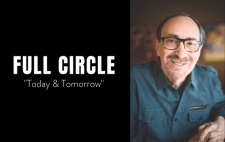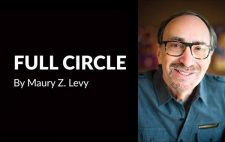I worked at a newspaper. A newspaper was like a blog that came off on your hands.
I was 22, just out of college and I knew nothing. So, what does a seasoned editor do with someone who knows nothing? He makes him his top feature writer and lead columnist.
This was in Trenton. The paper was The Trentonian, the second newspaper in a two-newspaper town. We had a small staff. So when I wasn’t writing my column, I covered everything else.
“Levy,” my editor yelled with the phone in his hand. “There’s a big lumberyard fire out in Hightstown. It’s all yours.” I sure picked the wrong day to wear my new Florsheims.
The fire was a whopper. I could see the smoke from miles away. Steno book in hand, Bic pen at the ready, I walked up to one of the fire chiefs.
“How bad is it?” I said.
He just looked at me. “It’s wood,” he said. “It burns.”
I wrote that all down. Then I tramped across the hose lines until my Florsheims were mud. I scribbled down notes. I talked to other firemen.
“How bad is it?” I asked.
“Worst fire I ever saw,” one of them said. I would learn later that there was always someone who would call a fire the worst he’s ever seen. You just had to find him.
I wrote down every fire company that had responded. Firemen liked when you did that. My work here is done, I thought. But maybe I should call the office, just in case there’s something I missed. I stopped at the closest gas station and used their payphone. A payphone was a landline inside a booth.
“I think I got everything,” I told my editor.
“What’s the number?” he said.
“Number? What number?”
“What’s the amount of damage?”
“Damned if I know. It’s piles of wood.”
“Find out what it’s worth. Don’t come back until you do.”
So, I asked the guy who thought it was the worst fire ever. “Probably a few hundred thousand,” he said.
“$300? 400? How about $500?” I was no dummy. The more this fire was worth, the bigger my story would be.
He shrugged his shoulders. “I guess you could say 500.”
And there it was. A half-million dollar fire, ready for page one.
I got back and stared at my manual typewriter. What was I going to write? No lives were lost. A lot of wood was burned. So I started writing down every fire story cliché I had ever read. The inferno could be seen for miles. Dense, acrid smoke filled the air. The fire hoses crisscrossed like lifelines. After three pages of this, I handed it in.
“Hey, Levy,” my editor said. “This is the best fire story I ever read.”
I just smiled. Life was good. Except for my shoes. I hung around the office until 11 pm, when the first edition rolled off the presses with the biggest page-one headline I’d ever seen: $500K FIRE DESTROYS LUMBERYARD.
And then the phone rang. It was the publisher. He started yelling at me. “$500K? That’s the best you could do? We’re trying to sell papers here. You get somebody to make that a million.”
And so I started calling, waking up every fire chief I’d met in the middle of the night. After four hang-ups, I got one of them to talk.
“Could it be worth $600K?”
“I guess.”
“How about $750?”
“OK.”
“Then what about a million? Would you go for a million?”
He wiped the sleep from his eyes, cleared his throat and boldly made his pronouncement. “Maybe,” he said.
That was it. I had my million-dollar fire. There were high fives all around the newsroom. On my way out, I picked up the first copies of the second edition. “$1 MILLION FIRE DESTROYS LUMBERYARD,” the headline said. And I drove home. Feeling like a million.












